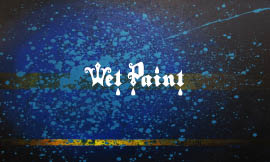Tuesday, July 19, 2011
Process of the Passion
Painting or simply, creating art, whether it be with paint, pencil, or whatever has been something I've held on to ever since I was a little girl. I get lost in it. It makes me feel better about myself. It's something I have that no one can take away from me. I want to share with you what I hold so dear, the process I go through in each painting I create.
I want to reach out to others who share the same passion for the craft.
Each piece I post will guide you through and explain the steps towards a finished piece.
I want to reach out to others who share the same passion for the craft.
Each piece I post will guide you through and explain the steps towards a finished piece.
Step 2
Step 3
Step 4
Friday, July 8, 2011
Process of the Passion
Painting or simply, creating art, whether it be with paint, pencil, or whatever has been something I've held on to ever since I was a little girl. I get lost in it. It makes me feel better about myself. It's something I have that no one can take away from me. I want to share with you what I hold so dear, the process I go through in each painting I create.
I want to reach out to others who share the same passion for the craft.
Each piece I post will guide you through and explain the steps towards a finished piece.
I want to reach out to others who share the same passion for the craft.
Each piece I post will guide you through and explain the steps towards a finished piece.
Step 1: White Paint

The first thing that was done was the background. After the background dried, white paint was used to paint the entire image of the peacock. White paint is used to refer back to the canvas. It is an opaque color, as opposed to the primary colors. When you place other colors on top of the white paint, it helps that layer be more distinguished from the others. In this image, paint has been added to the head of the peacock (on top of the white).
Step 2: What Goes on Top

Once you have the white bit down, you build on top. The white paint works as the canvas. All colors are transparent. If you paint yellow on top of blue (which is already dry) you will get green. Colors don't mix but, you can still see through them (with acrylic paint). This is why, with each layer, you paint it white. This way, you develop those "true" colors. Layers are still involved to make it solid.
Step 3: Color Correction

One of the things that I want everyone to realize is that you are not always going to hit "perfection" the first time. You will always find yourself modifying and correcting. Painting is fun and relaxing but, it can also be frustrating at times. In this image, I am building the base color of what I want the feathers to be before I go into the detail.
Step 4: Shaping with Darks

In this image, the image is being sculpted using darks, subtle darks. The forward feathers begin to come to life as well as the feathers that take up most of the composition. Notice that there are no outlines, only shading (when it comes to the feathers). Details include shading as well as the "eyes" of the feathers.
Step 5: Details

Finishing touches are in the detail. In this case, it was creating the feathers to be more realistic and adding the splatter of gold. In many cases, you have to know when to walk away from a piece. You can render all you want but, in most cases, enough is enough and as an artist you have to know when you've got enough "ingredients". Adding more gold to the outline contributed to the finishing touches.
Subscribe to:
Posts (Atom)





